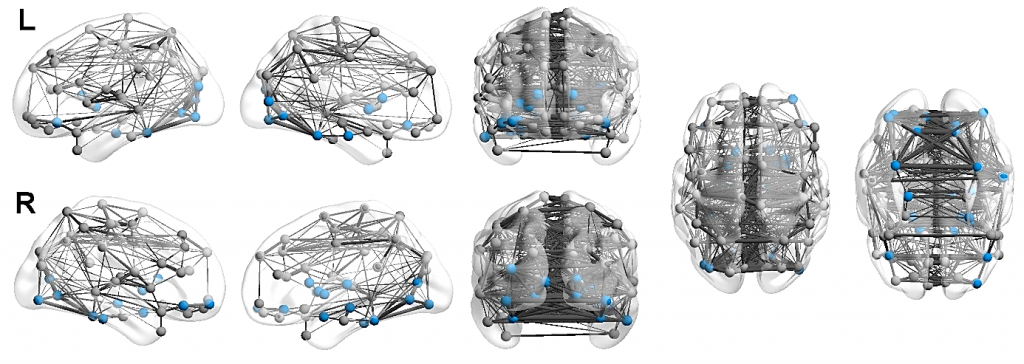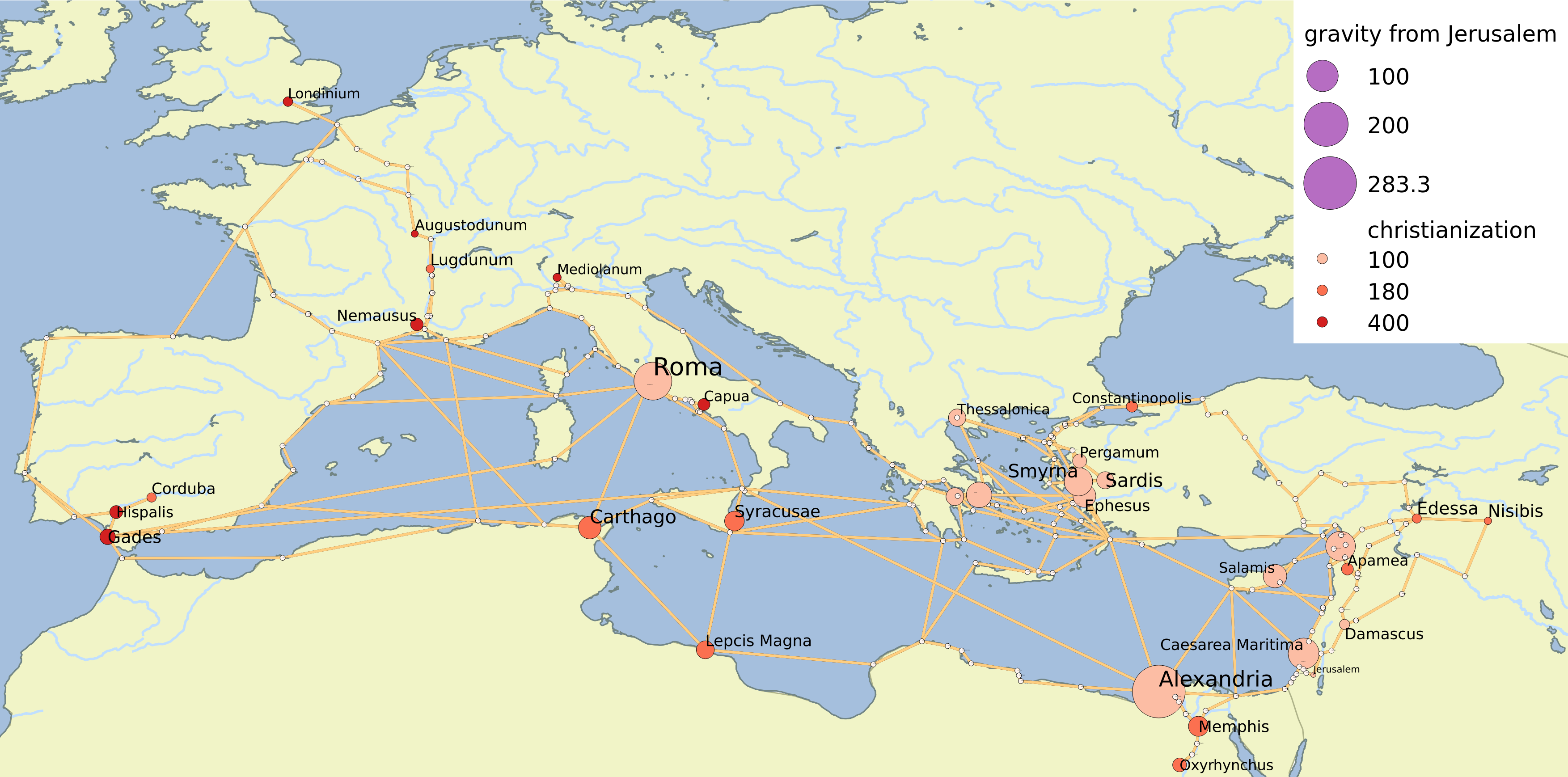Research
Complex network analysis
Complex network analysis
Neuroscience on CEITEC.
Modelling and Simulating the Diffusion of Religious Ideas
This project applies selected methods of formalized modeling and computational simulations to the study of the diffusion dynamics of religious ideas and forms of behavior in ancient Mediterranean. As the spread of information was much more constrained by the physical space, than it is in contemporary society, the transport networks are pivotal to all our analyses. These transport networks are result of combination of geospatial analysis and historical evidence, and define constraints for modelling dynamic processes (such as diffusion), or agent-based simulations. Results of these simulations can be then compared to available historical evidence, providing insight to possible realisations of otherwise speculative hypotheses.
Several factors differentiate the analysis of transport networks in historical context from contemporary analogues. First, the time-scale on which the network changes is similar to the time-scale of traversal of the network: it took months to travel between distant parts of the Roman world, however the seasonal climatic factors influenced viability of some of both ground and maritime routes (e.g.\,mountain passes in winter). We are currently working on reformulating the transport model of [ORBIS: The Stanford Geospatial Network Model of the Roman World](http://orbis.stanford.edu/) in the framework of temporal networks, so that is easier to incorporate it in the models of dynamic processes and agent-based simulations.
Contact: Jan Fousek, izaak@mail.muni.cz
Brain networks
Network characteristics derived from graph theory are currently widely used in neuroscience for description of relations between brain areas, i.e., functional connectivity (Bullmore & Sporns, 2009). This method usually requires reduction of dimensionality of measured data. The approaches are based on parcellation of the brain space according an atlas template or in data-driven fashion. It has been shown in many studies that thus constructed network is altered by diseases, such as Alzheimer’s and Parkinson’s diseases, schizophrenia or epilepsy.

Together with our coworkers at CEITEC we concentrate on revealing patterns of changed network topology in mentioned ilnesses. The data recordings are acquired by high-end 3T MR and high density EEG machines available on CEITEC. Through diverse scientific projects, we collaborate with scientists from Oslo, Norway, and Institute of Scientific Instrument of The Czech Academy of Sciences. We are also working on establishing efficient data processing procedures, including evaluation of preprocessing steps and development of new methods for quantifying the dynamics of the functional connectivity.
Contact: Eva Výtvarová, eva.vytvarova@gmail.com




